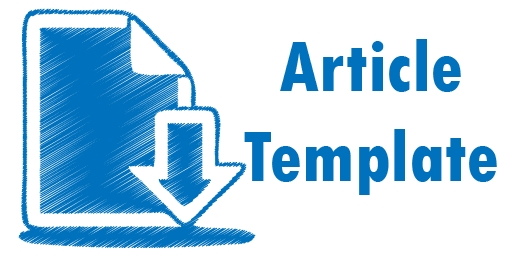the Analysis Ability Communication and Collaboration Student Through Learning Models Guided Inquiry Learning and Guided Discovery Learning on Material Chemical Equilibrium
Abstract
Based on interview with Teachers of SMAN 9 Padang, skills communication and collaboration not enough become attention and no ever identified _ whereas Curriculum 2013 requires teachers to develop Skills 21st century in between is communication and collaboration. one way you can bring up ability communication and collaboration student This is with implementing the Learning Model Guide Inquiry Learning (GIL) and Guide Discovery Learning (GDL). From syntax both of these models are in the implementation of the learning process student shared to in group so that student demanded more active compared to Master. Study This aim For describe is there is influence application of learning models GIL and GDL against ability communication and collaboration student class XI SMAN 9 Padang on the material equilibrium chemistry . Population study This is whole student class XI MIPA SMAN 9 Padang registered in Year Teaching 2019/2020. Sample taken with simple random sampling technique . Instrument evaluation form sheet observation and portfolio . Obtained data analyzed with use Miles and Huberman analysis. Research results with application of learning models GIL got _ percentage ability communication oral student namely 9.09% model , 90.09% proficient , and 0% developing nor beginner . Ability communication he wrote ie 90.90% very satisfactory , 9.09% satisfactory , and 0% not satisfying . ability the collaboration namely 36.36% model , 63.63% proficient , and 0% developing nor beginner . In the application of the GDL learning model , it is obtained percentage ability communication oral student namely 20% exemplary , 62.85% proficient , 17.14% developing , and 0% beginner . Ability communication he wrote ie 74.28% very satisfactory , 25.71% satisfactory , and 0% not satisfying . ability the collaboration namely 34.28% model , 65.71% proficient , and 0% developing nor beginner. Keywords : Guided Inquiry Learning, Guided Discovery Learning, communication , collaborationReferences
Hanson, D. M. (2006). Instructors Guided to Process Oriented Guided-Inquiry Learning. Lisle, IL: Pacific Cest.
Hosnan. (2014). Pendekatan Saintifik dan Kontekstual dalamPembelajaran Abad 21 . Jakarta: Ghalia Indonesia.
Marzano, R. P. (1994). Assessing Student Outcomes: Performance Assessment Using the Dimension of Learning Model. Alexandria Virginia: Association for Supervision and Curriculum Development.
Mehta., M. P. (2017). What We Educators Get Wrong About 21st-Century Learning: Results of a Survey. Journal of Digital Learning in Teacher Education, 33 (1), 6-19.
Mulyasa .(2013). Pengembangan dan Implementasi Kurikulum . Bandung: PT Remaja Rosdakarya.
P21. (2007). The Intellectual and Policy Foundations of the 21st Century Skills Framework. Washington DC: Partnership for 21st Century Skills.
Sani, R. A. (2014). Pembelajaran Saintifik Untuk Implementasi Kurikulum 2013. Jakarta: Bumi Aksara.
Sanjaya, W. (2006). Strategi Pembelajaran Berorientasi Standar Proses Pendidikan . Jakarta: Kencana Prenada Media Group.
Saputri, A. C. (2017). Identifikasi Keterampilan Berfikir Kritis Siswa Dalam Pembelajaran Biologi Menggunakan Window Shopping. Prosiding Seminar Nasional Pendidikan Sains (SNPS), 1 (1), 131-135.
Scott, C. L. (2015). The Futures Of Learning 2: What Kind Of Learning For The 21st Century? Education Research And Foresight Working Papers UNESCO, 1-14.
Smitha. (2012). Inquiry Training Model and Guided Daiscovery Learning . Kozhikode: Vilavath Publication.
Susilo. (2015). Curriculum of EFL Teacher Education and Indonesian Qualification Framework: A Blip of the Future Direction. Jurnal Dinamika Ilmu, 15 (1), 11-24.
Yerimadesi. (2018). Model Guided Discovery Learning untuk Pembelajaran Kimia (GDL-PK) SMA. Padang: Program Pascasarjana UNP.
Copyright toward articles published by Entalpi Pendidikan Kimia is hold by Entalpi Pendidikan Kimia. In the other side, Entalpi Pendidikan Kimia also applied CC Attribution 4.0 which means you could 1) share — copy and redistribute the material in any medium or format; and 2) adapt — remix, transform, and build upon the material; for any purpose, even commercially. As long as you give us attribution — You must give appropriate credit, provide a link to the license, and indicate if changes were made. You may do so in any reasonable manner, but not in any way that suggests the licensor endorses you or your use. Entalpi Pendidikan Kimia also applied Open Access toward each published articles, so the published content will be available freely for public.





